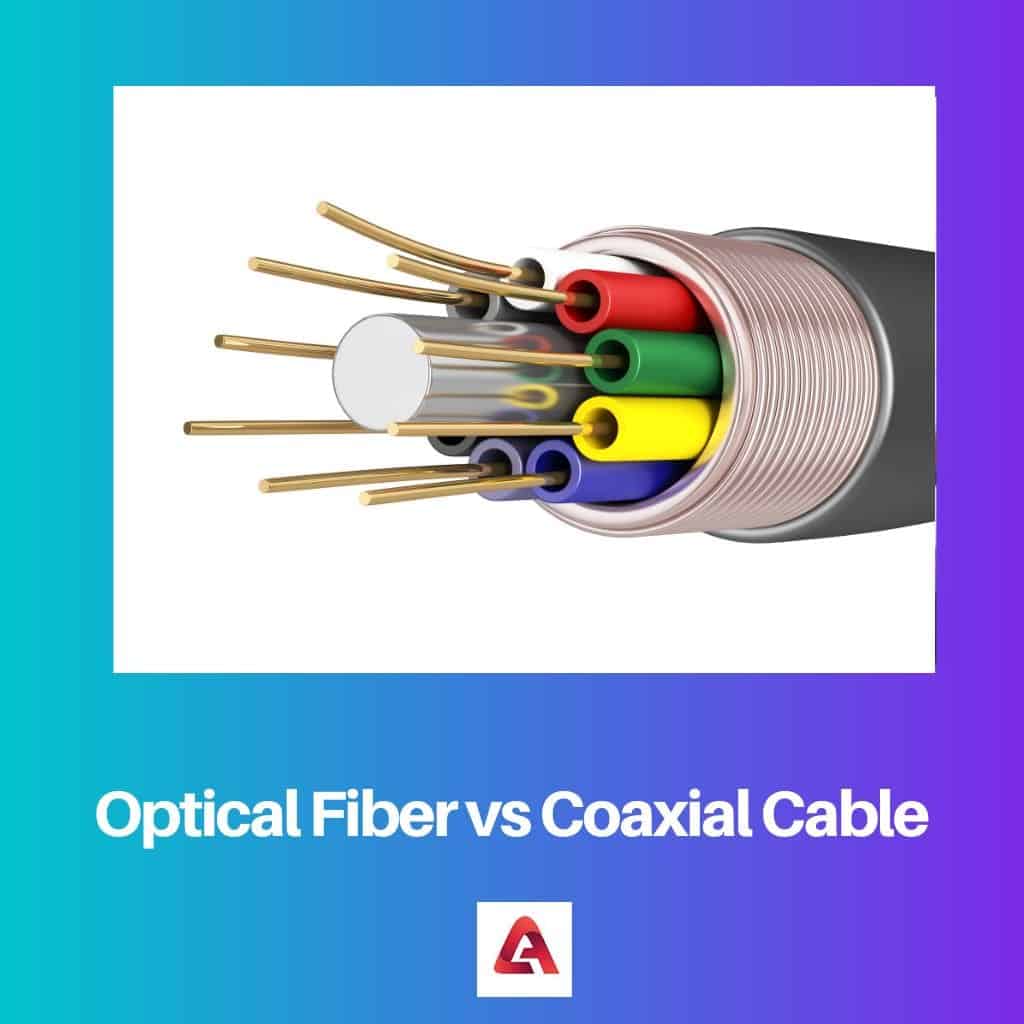Optical fiber is a type of cable made of fibers that transmit light signals over long distances. Coaxial cable consists of a copper wire surrounded by an insulating layer, woven copper shielding, and a protective outer jacket. Optical fiber has a much higher bandwidth than coaxial cable.
Key Takeaways
- Optical fibers use light to transmit data, while coaxial cables use electrical signals, making optical fibers less susceptible to interference and signal degradation.
- Optical fibers have a higher bandwidth and can transmit data longer distances than coaxial cables.
- Coaxial cables are more durable and easier to install than optical fibers but have a lower overall performance in speed and distance capabilities.

What is an Optical Fiber?
Optical fiber is an advanced medium to transmit data from one place to another. It is used in distant data transmission. It is a thin, flexible strand made from glass or plastic. It has an advantage over traditional copper fiber as it sends a large amount of data at higher speeds over long distances. Its application can be found in telecommunication, internet connectivity, and medical imaging.
A cladding layer of highly pure glass or plastic surrounds an optical fiber’s core, which helps reflect light into the center. This cladding layer does not let the light be scattered and reflected while traveling, allowing high-quality signal transmission. The installation process is also easy because of optical fibers’ small size and flexibility.
With the development in the field of technology and electronics and research aiming to increase the speed and capacity of data transmission, optical fiber technology is constantly advancing. These advanced research and development products include new types of fibers, such as few-mode and photonic crystal fibers, and new techniques for transmitting data.

What is a Coaxial Cable?
Coaxial cable, also known as ”coax”, consists of a central conductor, an insulating layer, a shield, and an outer jacket. The central conductor is copper, while the insulating layer is polyethylene. It is a type of electrical cable which commonly serves various purposes, including television and internet signal transmission. The shield of the coaxial cable is made of braided copper.
It can transmit high-frequency signals over long distances; during this, there is minimal loss of signal quality. It is due to the shield, which efficiently blocks external interference such as radio frequency interference and electromagnetic interference. Moreover, the geometry in cable helps to protect against signal loss by managing the integrity of the electromagnetic field surrounding the central conductor.
Coaxial cable is used in many applications, including wireless communication, satellite TV, cable television, and the Internet. Cable TV and the internet are used as service providers to the customer’s home. In satellite TVs, it links the satellite dish to the receiver, and in wireless communication, it transmits signals over a country mile.

Difference Between Optical Fiber and Coaxial Cable
- Optical fibers are a medium of light transmission, whereas coaxial cables use electric signals to transmit data.
- Optical fibers cover longer transmission distances, whereas coaxial cables are used at shorter distances.
- Optical fibers have a much higher bandwidth capacity, whereas coaxial cable has a relatively lower bandwidth capacity.
- Optical fibers are more resistant to external interruptions, whereas coaxial cables are less resistant in this regard.
- Optical fibers are much thinner and more flexible, whereas a coaxial cable is harder and thicker.
Comparison Between Optical Fiber and Coaxial Cable
| Parameters of Comparison | Optical Fiber | Coaxial Cable |
|---|---|---|
| Medium of Transmision | Light | Electric Signals |
| Ideal Distance | Longer Distance | Limited Distance |
| Bandwidth Capacity | Higher | Lower |
| Resistance | More Resistant | Less Resistant |
| Material Specs | Thinner and Flexible | Thicker and Harder |

- https://link.springer.com/article/10.1007/s12043-001-0003-2
- https://aip.scitation.org/doi/abs/10.1063/1.3636406
